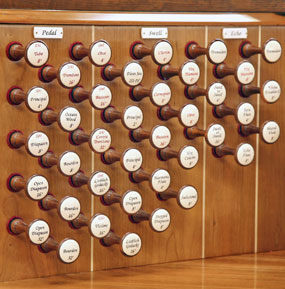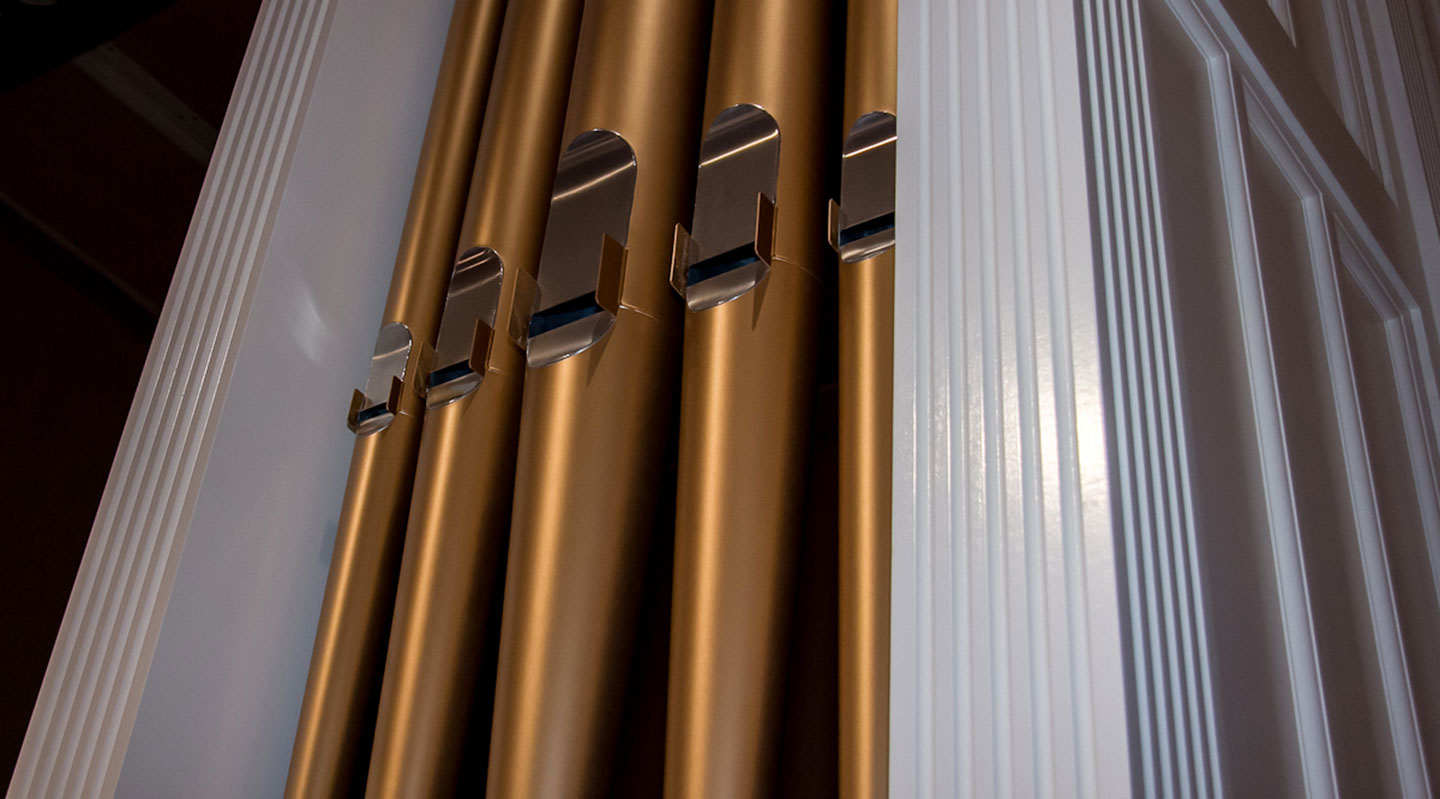Principal Stops
What is a Principal? Principals are the main voice of the pipe organ. Principals, (specifically the Great principal chorus), are the backbone to the tonal body of an instrument. The total character of any organ is either, made by the success of a well-voiced principal chorus, or broken by the failure of an inadequate one.
Principals, unlike flute pipes or string pipes, are true organ pipes. They are not voiced to imitate any other instrument, but are indeed musical instruments in their own right. Their sound is clear, their tambour full and rich containing, in proportion, every harmonic in the natural series. Alone, a principal has complex voice comprised of strong fundamental tone and rich overtones. Used in conjunction with other stops, a principal blends and adds support, losing a little of its acuteness but retaining the strong fundamental. And built up with others of the principal chorus, (4′ Octave, 2′ Fifteenth, Mixture IV), they give us that classic “organ” sound that no other instrument can imitate.
Principals are always open at the top (not stopped or capped) and are usually made of metal. Their scaling is somewhere between flutes (which are generally widely scaled) and strings (which are generally narrowly scaled). They are tuned by means of a sleeve or sliding collar at the top of the pipe. Some principals are slotted at the top and are tuned by means of a scroll which is nothing more than the metal which was cut from the slot being rolled down almost like a sardine can. Principals found in the façade of an organ can either be tuned by means of a scroll or by means of an internal sliding sleeve. Principals are usually cylindrical in shape although some, such as Spitz Principals, are slightly conical with the body of the pipe tapering slightly inward toward the top.

Open Diapason is the most common name given to the main 8′ principal on the great division. Sometimes just Principal is used to denote the same. Montre is the French version and Prinzipal is German. There is also the English Open Diapason which is an American name given to a broad scaled round toned principal voiced to imitate the sound of the British school of voicing. The 4′ principal can be called just that, 4′ Principal. Also called Octave, the 4′ principal sounds a note one octave higher than the same note played on the 8′. At 2 2/3′ a principal can be called Twelfth or Octave Quint, the first derived from the fact that the note sounded by this rank is 12 notes higher (major scale) than the same note sounded by the 8′. Quint is derived from fifth and sounds a note a fifth higher than the same note sounded by the Octave. At 2′ pitch, a principal can be called simply Principal. It can also be called Fifteenth or Super Octave. Fifteenth is derived from the fact that a note sounded by this rank is 15 notes (two octaves) higher than the 8′. Super Octave means simply that the note played is one octave above the Octave (over octave).
There are also Violin Diapasons or Geigen Diapasons. More commonly found in the Swell or Choir divisions, these are voiced a bit more acutely and therefore somewhat resemble strings. A Nachthorn although sometimes a stopped pipe resembling a Gedeckt can also be a principal. Prestant or Praestant is also a principal with one major distinction. In classical organ building, a stop with the name Prestant was usually found either completely or partially in the façade of the organ case. Today however, we have dispensed with that convention and a Prestant can be found anywhere in the organ.
In the pedal can be found the Choral Bass, which is a principal of 4′ pitch. Contra Bass is a 16′ principal with a stringy character. The majority of the principals found in the pedal are constructed of wood however they can also be of metal.
Voiced for prompt, clear speech, principals work very well in contrapuntal music where several voices must be heard clearly and accurately. They also provide wonderful support for leading the congregation in a hymn and are indispensable to the organ tuner—the clarity and presence of their tone is just what the tuner needs for setting a temperament and tuning all the other stops.
« Back to Stops
